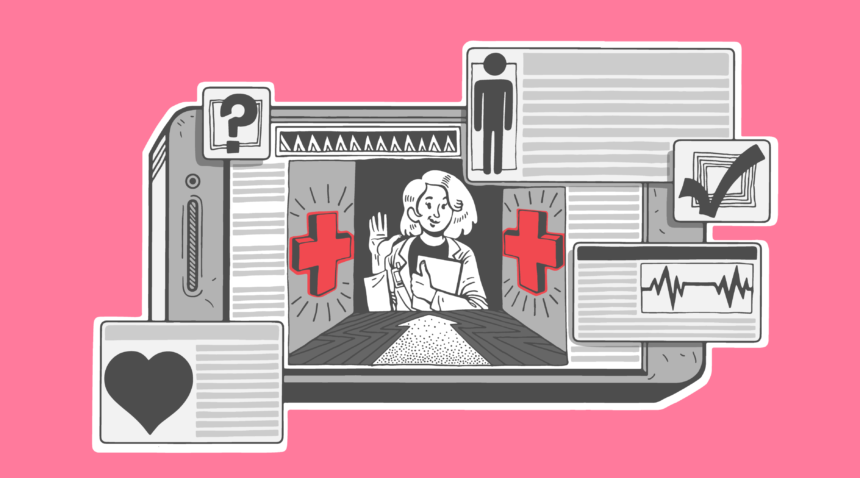Schools and retail stores aren’t the only ones shifting online to help put the brakes on the spread of the coronavirus disease 2019 (COVID-19). Most medical practices have turned to telehealth—also called virtual care—to provide health care to patients while limiting exposure to the virus.
Virtual care allows people to stay at home and communicate with their healthcare providers through phone, tablet or computer. It means your healthcare provider can continue to support your health even if he or she does not see you in person, in the office.
Virtual care visits can be an important tool for maintaining and improving health, especially right now. Try these five tips to make the most of your time.
1. Prepare ahead of time.
Just as you would before an in-person visit, write down all the questions you’d like to go over with your provider and make a list of medications you take.
“Have a list of things that we need to address,” says UNC family medicine physician Dana Neutze, MD, PhD. “It helps us stay on task, because people can get distracted from what they’re supposed to be talking about.”
Potential items for your list: your primary reason for the visit, how you’re managing any chronic conditions, mental health or mood concerns, and prescription side effects or refills.
2. Find a quiet space.
Dr. Neutze recommends finding a private, quiet space in your home for your virtual visit. “Sometimes the sound quality can be poor, so if there is not a lot of background noise, it is easier to hear each other.”
Adjust the lighting if using video. Turn on overhead lights and block light from windows, which can cause too much background light in the video.
Good lighting is also important if you plan to take and send pictures to your provider ahead of time, which can be helpful. For example, you might want to show your provider a cut or burn on your skin.
3. Test all your equipment before you begin.
Before your visit, check the volume level on your device to make sure audio is clear, and if using video, make sure your camera and microphone work well. Try to do a test run before your appointment.
“Make sure you have a good internet signal. If you do not, try moving to another room,” Dr. Neutze says.
Even if you’re on a computer or tablet, keep your phone nearby.
“Having your phone near you helps if we have trouble trying to make that connection,” Dr. Neutze says. “I’ve had to call a couple of people to talk them through the steps of connecting online, so if they have their phone handy, it’s easier to reach them.”
4. Use a secure connection.
Rest assured that your provider’s office is using a secure connection. What you are sharing is encrypted—meaning it’s concealed in code so that it cannot be read by an outside party.
To double-check, make sure the address in the web browser begins with https. The added “s” is key here. A website starting with https encrypts the data you provide to the website, and the data you get from it, so no one can eavesdrop or tamper with the data flow.
5. Check with your insurance provider to see what’s covered.
Contact your insurance provider to find out if both in-person and virtual visits are covered. That information may help you decide which is right for you.
“It’s always nice to have a face-to-face connection, and if you’re going to show us something, video may be better, but I’ve had patients successfully take and send pictures ahead of time because the patient didn’t have access to video, and we just followed up with a phone call,” Dr. Neutze says.
Just make sure you take quality pictures—your subject is in focus, and keep the picture free of distracting clutter.
If you think you may need an in-person visit instead of a telephone or video visit, call your healthcare provider.
For the latest information on COVID-19, visit the CDC website and the UNC Health COVID-19 Resources page, and follow UNC Health on Twitter, Facebook, Instagram and YouTube.

